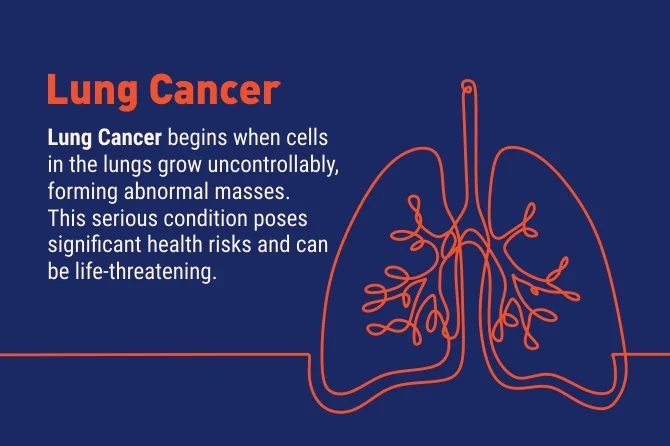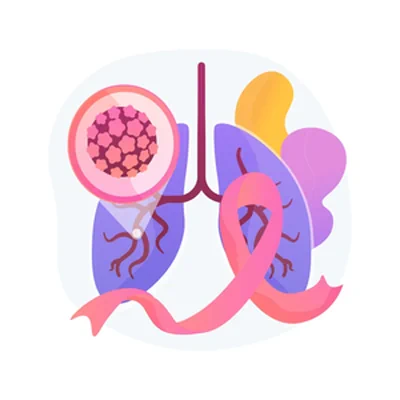
Radiation Therapy for Lung Cancer and What Patients Need to Know
Understanding Radiation Therapy for Lung Cancer
Radiation therapy is the foundation stone in the treatment of lung cancer, offering hope and potential remission for many patients. This treatment uses high-energy radiation to kill cancer cells and shrink tumours. Understanding the intricacies of radiation therapy can help patients make informed decisions and better prepare for their treatment journey.
Types of Radiation Therapy for Lung Cancer
Radiation therapy for lung cancer comes in various forms, each designed to target cancer cells effectively while minimising damage to surrounding healthy tissue. The two main types of radiation therapy are External Beam Radiation Therapy (EBRT) and Internal Radiation Therapy (Brachytherapy).
- External Beam Radiation Therapy (EBRT)
External Beam Radiation Therapy (EBRT) is the most common type of radiation treatment for cancer. It involves directing high-energy beams from outside the body to the tumour site. The best radiation oncologists use advanced imaging techniques to target the tumour precisely, maximising the impact on cancer cells while sparing healthy tissue. This method is non-invasive and typically administered over several weeks.
- Internal Radiation Therapy (Brachytherapy)
Internal Radiation Therapy, or Brachytherapy, involves placing a radioactive source directly inside or beside the tumour. This type of radiotherapy for cancer delivers a high dose of radiation to the tumour while reducing exposure to surrounding tissues. Brachytherapy is often used for specific types of lung cancer and can be combined with other treatments for enhanced effectiveness.
Benefits of Radiation Therapy for Lung Cancer Patients
Radiation therapy offers numerous benefits for lung cancer patients. It can:
- Shrink tumours and reduce symptoms, improving the quality of life.
- Increase the chances of successful surgical removal of the tumour.
- Provide an alternative to surgery for patients who are not surgical candidates.
- Enhance the effectiveness of other treatments, such as chemotherapy.

Preparing for Radiation Therapy: What to Expect
Preparation for radiation treatment involves several steps to ensure the best possible outcome. Patients typically undergo imaging tests, such as CT or MRI scans, to help the radiation oncologist map out the precise location of the tumour. This planning phase is crucial for targeting the radiation accurately.
Patients may also need to make lifestyle adjustments, such as quitting smoking and improving their diet, to enhance their body’s response to treatment. The best radiation oncologists provide comprehensive guidance on how to prepare for radiation therapy effectively.
Step-by-Step Process for the Radiation Therapy
- Consultation: Meet with a good radiation oncologist to discuss your treatment plan and ask any questions you may have.
- Simulation: Undergo imaging scans to map out the treatment area.
- Planning: The radiation oncologist designs a personalised treatment plan.
- Treatment Sessions: Attend regular radiation therapy sessions, typically five days a week for several weeks.
- Follow-Up: Regular check-ups to monitor progress and manage any side effects.
Potential Side Effects of Radiation Therapy
Though radiation therapy is effective, it might cause certain side effects. Common side effects include:
- Fatigue
- Skin irritation at the treatment site
- Shortness of breath
- Coughing
- Difficulty swallowing
The severity of side effects varies from person to person, and the best radiation oncologists work closely with patients to manage and mitigate these effects.
Managing Side Effects and Aftercare Tips
Managing side effects is an important part of the radiation treatment for cancer. Patients are advised to:
- Get proper rest and maintain a balanced diet.
- Follow the care instructions provided by the radiation oncologist.
- Use prescribed medications to alleviate specific symptoms.
- Stay hydrated and avoid exposure to extreme temperatures.
Radiation Therapy Success Rates and Prognosis
The success rates of radiation therapy depend on various factors, including the stage of lung cancer and the patient’s overall health. Early-stage lung cancer patients often have higher success rates with radiotherapy treatment. Ongoing research and advancements in technology continue to improve the prognosis for lung cancer patients undergoing radiation therapy.
Combining Radiation Therapy with Other Lung Cancer Treatments
Radiation therapy can be combined with other treatments, such as chemotherapy and surgery, to enhance effectiveness. This multimodal approach can:
- Increase the chances of complete tumour removal.
- Reduce the risk of cancer recurrence.
- Improve overall survival rates.
- The best radiation oncologists work as part of a multidisciplinary team to create a detailed treatment plan designed to each patient’s needs.
By providing this detailed guide, CBCC India hopes to empower patients with the knowledge they need to navigate their radiation therapy journey with confidence and clarity. Understanding the steps involved and the expertise required can make a significant difference in managing lung cancer treatment effectively.
At CBCC India, we are dedicated to the highest standard of care, equipped with modern technology and a team of dedicated specialists. As the best destination for cancer treatment, we ensure that our patients receive personalised, compassionate care throughout their journey.
Frequently Asked Questions
-
What are the treatment options for a lung cancer patient?
Patients with lung cancer have several treatment options, including surgery, chemotherapy, and radiation therapy. The choice of treatment depends on the type and stage of cancer, as well as the patient’s overall health. Consulting with a radiation oncologist can help determine the best approach.
-
What’s the best way to take care of myself at home?
Taking care of yourself during radiation therapy involves maintaining a healthy lifestyle, following your doctor’s advice, and managing side effects effectively. Adequate rest, proper nutrition, and staying hydrated are essential.
-
What should patients expect during radiation therapy treatment?
During radiation treatment, patients can expect to attend multiple sessions over several weeks. Each session is usually short, lasting about 15-30 minutes. The procedure is painless, but patients may experience side effects like fatigue and skin irritation.
-
How does radiation therapy work to treat lung cancer?
Radiation therapy works by using high-energy radiation to kill cancer cells and shrink tumours. The radiation damages the DNA of cancer cells, preventing them from growing and dividing. This treatment can be used alone or in combination with other therapies to enhance effectiveness.
-
What are the different types of radiation therapy used for lung cancer?
The main types of radiation therapy used for lung cancer are External Beam Radiation Therapy (EBRT) and Internal Radiation Therapy (Brachytherapy). EBRT involves targeting the tumour with radiation beams from outside the body, while Brachytherapy places a radioactive source directly inside or next to the tumour.


